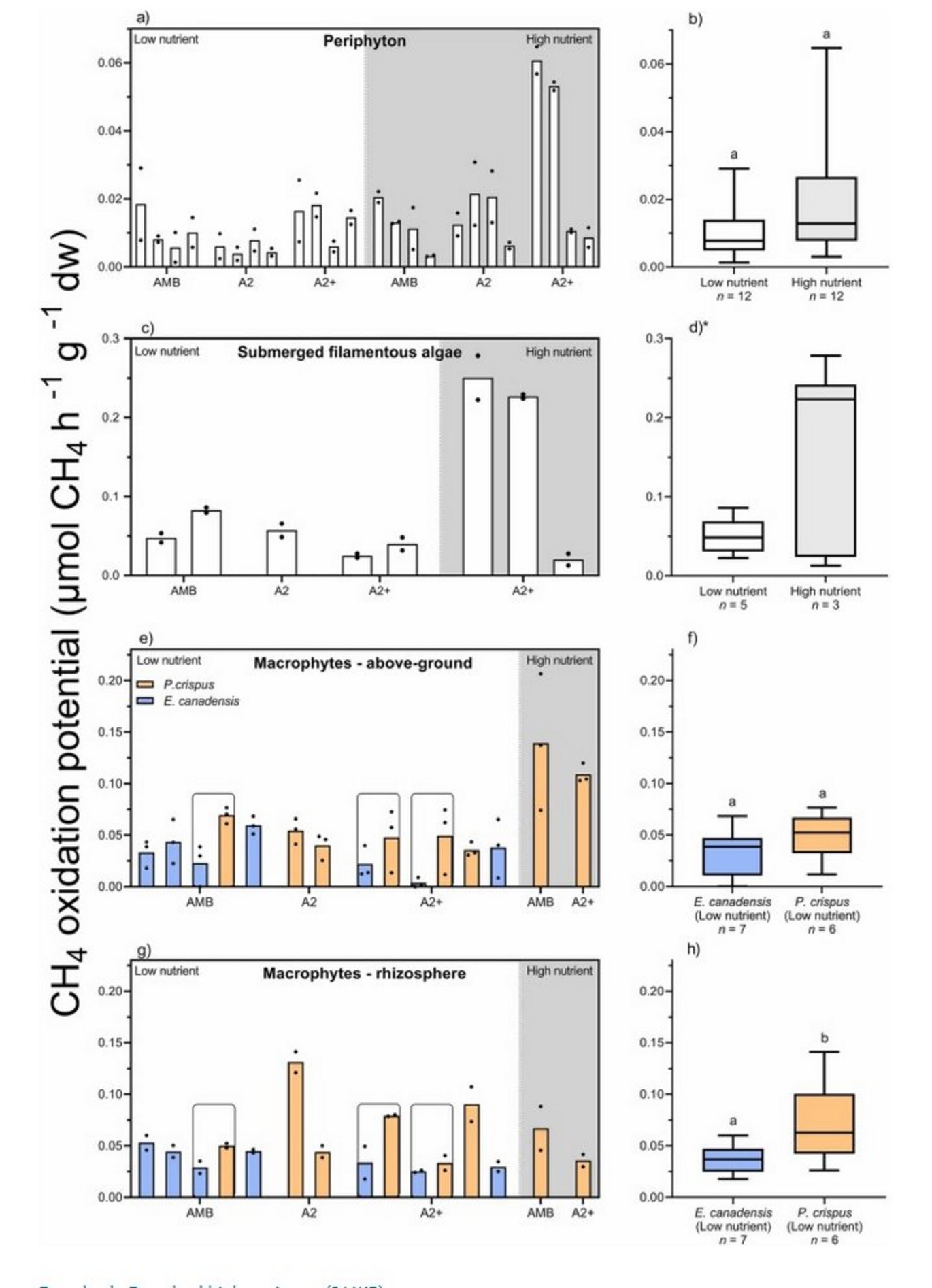Activity and abundance of methane-oxidizing bacteria on plants in experimental lakes subjected to different nutrient and warming treatments
New publication by Esposito, C, Nijman, TPA, Veraart, AJ, Audet, J, Levi, EE, Lauridsen, TL & Davidson, TA

Abstract:
Shallow lakes produce and emit substantial amounts of methane (CH4). Part of the CH4 produced in lakes is consumed by methane-oxidizing bacteria (MOB) present in the sediment and water column, thus reducing the overall CH4 emissions. However, the role of aquatic plants as habitat for CH4 oxidation by MOB is poorly understood. In this study, we compared CH4 oxidation rates and MOB abundance associated with different types of aquatic plants (periphyton, filamentous algae, and both above-ground macrophytes and their rhizosphere). The plants were collected from shallow lake mesocosms exposed to experimental nutrient enrichment and warming treatments for 17 years prior to this study. Incubations of all sampled plants showed CH4 oxidation, with above-ground macrophyte tissue and filamentous algae having the highest rates of up to 0.25 µmol CH4 h−1 g−1 dw. Oxidation rates associated with macrophytes were species dependent, with consumption rates on rhizospheres of Potamogeton crispus higher than those on Elodea canadensis. The increase in nutrients and dissolved CH4 in the water tended to increase MOB abundance and activity for all plant types, while no effect of long term warming was detectable. Our results showed that MOB associated with periphyton, filamentous algae and macrophytes oxidize CH4 in shallow lakes at different rates across species or plant types. We also found that high macrophyte biomass is associated with reduced CH4 concentration in the water. This study shows that CH4 oxidation occurs on many plant surfaces but that oxidation rates alone cannot explain the reduced CH4 emissions at higher plant biomass.
